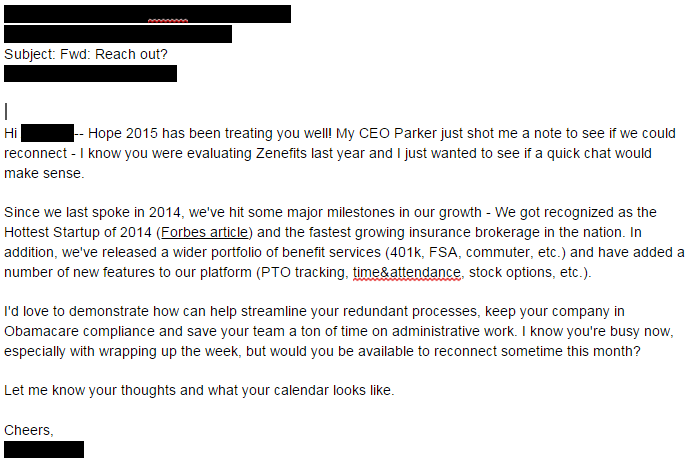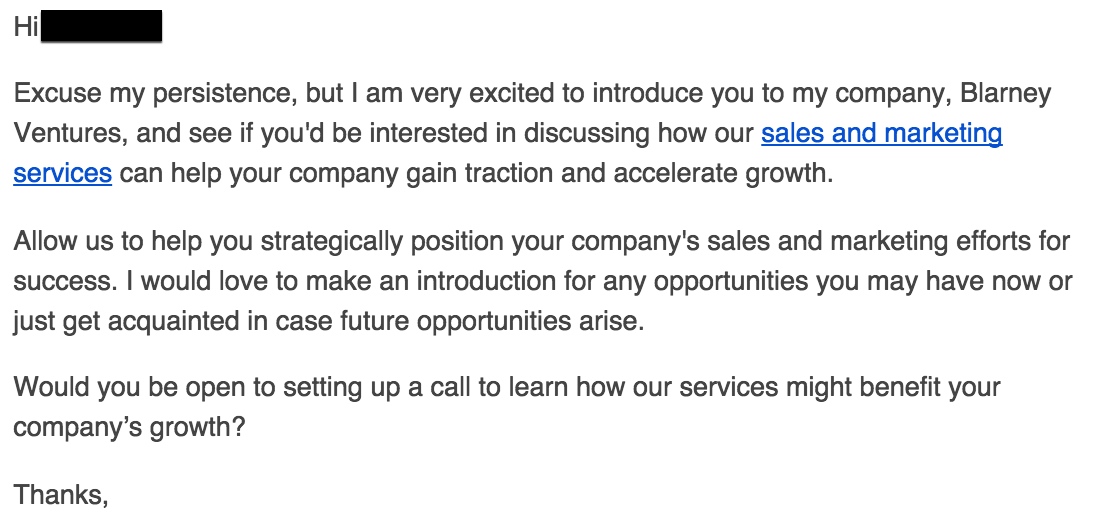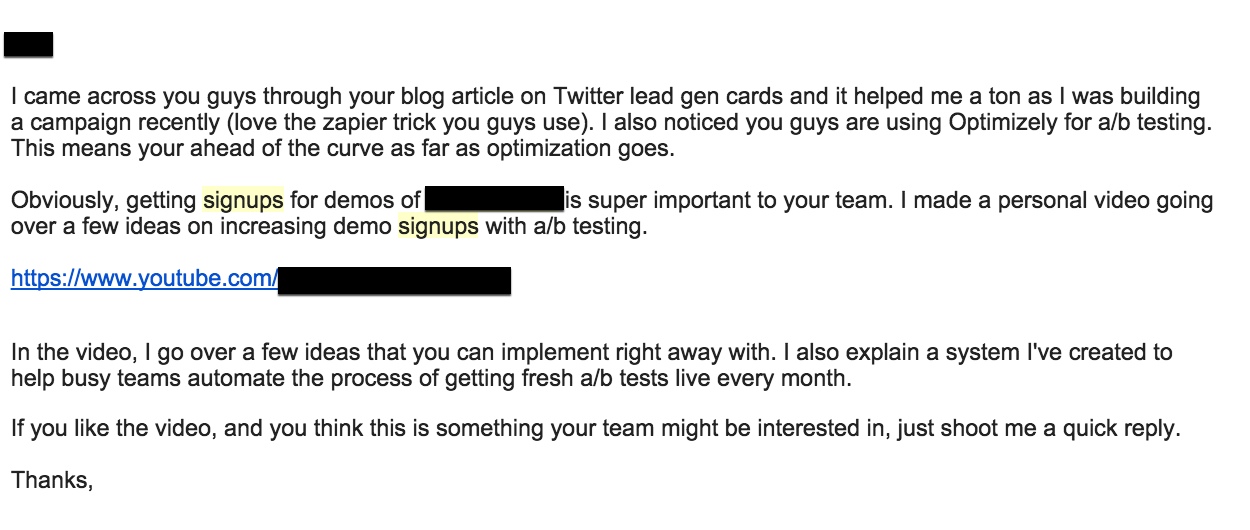Do your prospects grab your prospects’ attention and make them excited, or do they just press delete before they even get to the second line?
Would you reply to an email that feels salesy or pushy?
Probably not. So why should prospects respond either?
Most cold emails fail because they don’t connect with their audience because they feel disingenuous or impersonal. If you want to catch your prospects’ attention you need to address their needs and speak to them on a more human level.
Fixing these three common cold email mistakes can get you 3x more responses from your prospects.
Cold Email Mistake #1: Your message is too self-focused and impersonal
No one wants to hear you drone on about how awesome you think you are. Your prospects don’t care about how many awards your company has won or that your new product is your fastest or coolest ever. They only want to know how you can solve their problems.
How can you speak to your prospects needs if you don’t understand their needs? Before you craft any cold emails you need to develop a clear buyer persona and research your prospects’ industry and role to understand their pain points and priorities.
Canned and generic messages won’t get responses in 2015. Everyone has become immune to gimmicky emails that feel mass. Your prospects want to feel special, and know that you took the time to understand them and their business. If you send the same message to a CEO as a VP of Engineering you will either alienate one of those parties with an untargeted message that doesn’t make sense, or bore both of them with vague language. Instead you need to create thoughtful emails that are specific to each of your buyer persona’s needs.
Cold Email Mistake #2: You’re boring your prospects with long-winded pitches
Your prospects are busy people. They don’t have time to read through bloated paragraphs that resemble small novels, and they aren’t going to go out of their way to read a white paper that explains your value proposition either. You only have a few seconds to entice someone with your message before they click delete, so don’t waste words on useless fluff.
The only goal of a cold email is to get your prospects talking to you. Don’t get too overwhelmed trying to say everything in the first email; you can always explain more when you have them on the phone or in following emails. Keep every email simple, and focus on one main benefit or idea per email. Because people have short attention spans, you should try to keep your cold emails to 2-5 sentences. The most persuasive cold emails eliminate anything that does not support the email’s main idea.
Cold Email Mistake #3: Weak Calls to Action lose your prospects’ attention
Even if you write the best introduction to your cold email, a weak or missing Call to Action will kill your chances of getting a response. Spending your time talking to a stranger is a risk, so you need to give prospects assurance that talking to you won’t waste their time. Great calls to action offer prospects value or gives a sense of “fear of loss,” and incentivize them to promptly respond.
How can you make it worth their while?
Make sure your prospects clearly understand how they’ll benefit by talking to you. Incentive your CTAs by offering a piece of actionable advice or sharing a quick idea that can help improve their business.
What To Think About Next Time You Start A Cold Email
Here are a few quick takeaways you can use for crafting your next cold email based on the mistakes mentioned above.
- Start your first sentence as a question that is focused on your prospect, ideally one that makes them think about an existing pain point or a potential benefit you can offer.
- Keep your cold emails short and conversational. Try to use the word “you” more than “I.”
- Try to keep your Call to Action in one short and clear sentence. Questions like “When do you have time for a short call so I can share an idea that could double {!Company}’s revenue?” tend to work well.
…That way your emails will get responses like these:

Instead of ending up here with all the other SPAM:








